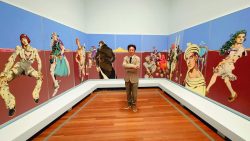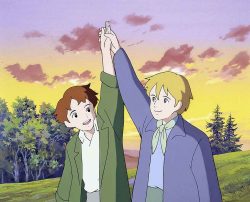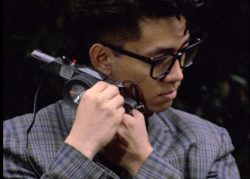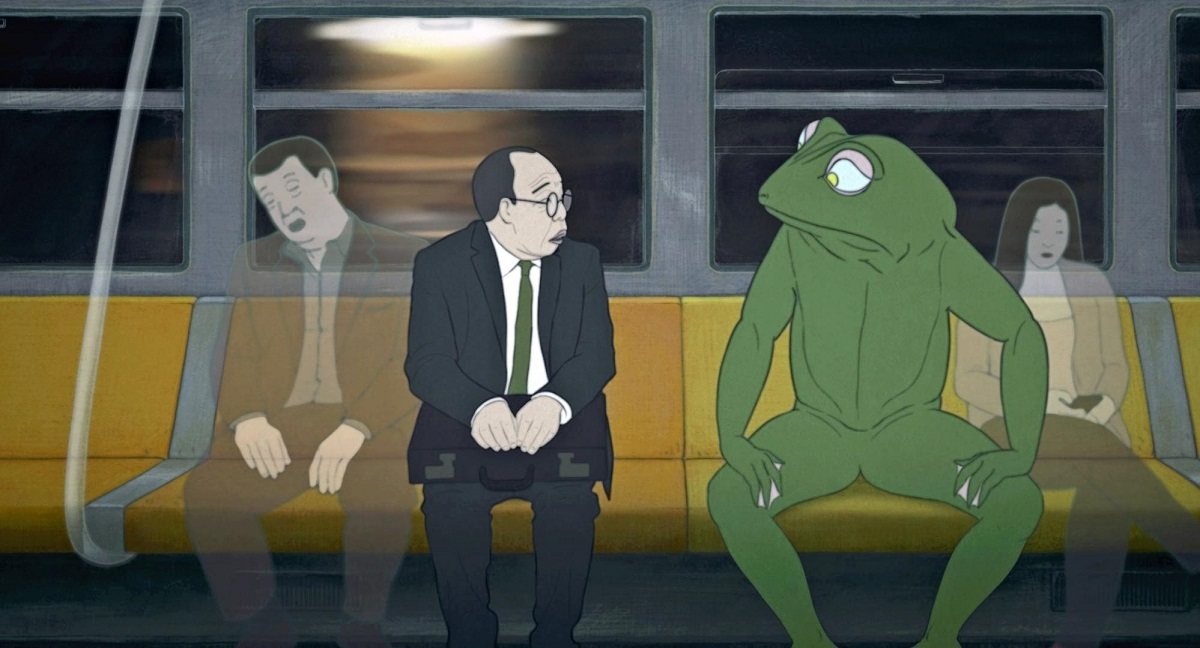
Katagiri, second from left, talks with Kaeru-kun, second from right, as they try to save Tokyo from devastation.
12:15 JST, September 13, 2024
Six stories by Haruki Murakami have been woven together into an animated film, for the first-ever animated adaption of the writer’s work. The movie, “Mekurayanagi to Nemuru Onna” (“Blind Willow, Sleeping Woman”), is directed by the versatile Pierre Foldes.
“I was fascinated by his whole style, his whole word,” Foldes said. “I didn’t want to [adapt] just one short story [by Murakami] … I thought I want to do something more complex, richer, and that’s why I chose many stories.”
The film is set in Tokyo shortly after the Great East Japan Earthquake in 2011. A man by the name of Komura spends his days in a haze after the disappearance of his wife, Kyoko. A chain of events sees him travel to Hokkaido to deliver a package to a colleague’s sister. Around the same time, Katagiri, another colleague of Komura’s, comes home to find a two-meter-tall giant frog waiting for him. The frog pleads with Katagiri to fight alongside him and save Tokyo from devastation.
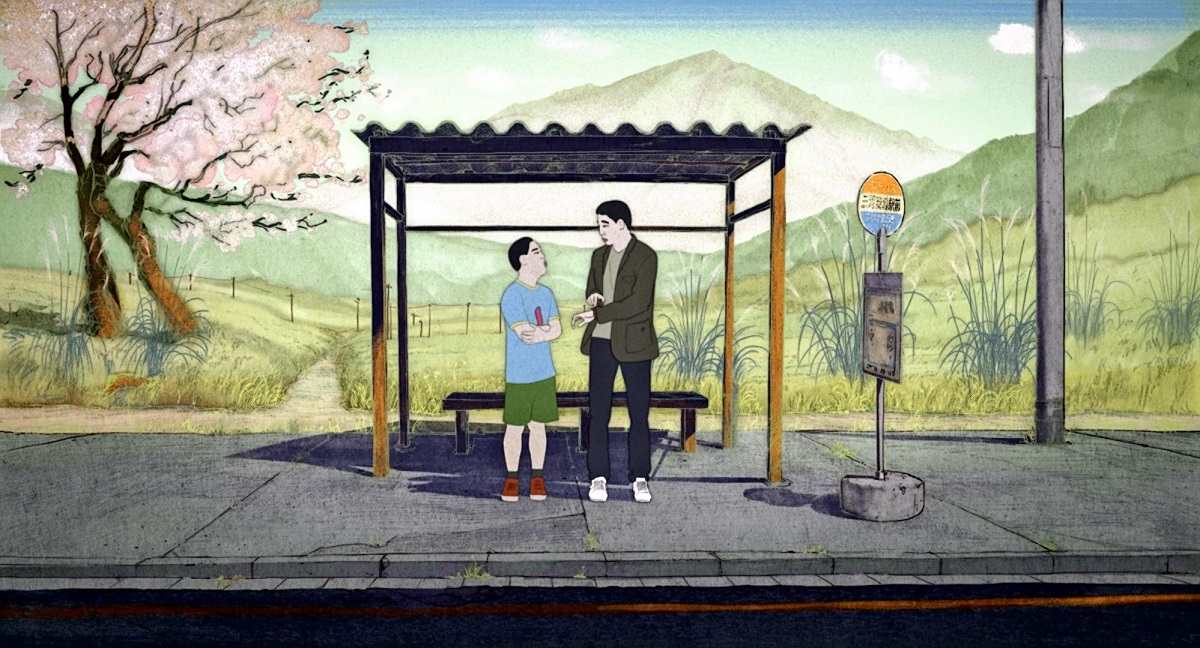
A boy, left, poses a question to Komura, who afterward starts tracking down his memories of the past.
The six short stories used for the film are “Mekurayanagi to Nemuru Onna” (“Blind Willow, Sleeping Woman”), “Kaeru-kun Tokyo o Sukuu” (“Super-Frog Saves Tokyo”), “Birthday Girl,” “Kaitsuburi” (“Dabchick”), “Nejimakidori to Kayobi no Onnatachi” (“The Windup Bird and Tuesday’s Women”) and “UFO ga Kushiro ni Oriru” (“U. F. O. in Kushiro”).
Foldes, born in the United States and raised in Paris, calls himself a cosmopolitan. When Murakami first suggested to Foldes that he adapt one short story into a film, he felt it was torture to have to choose just one, so avid a fan was he of Murakami. Foldes then made his own suggestion: Several stories could be combined into one. The first piece Foldes chose was “Blind Willow, Sleeping Woman,” which would form the basis of the whole film. The last one he chose was “Dabchick,” which he cut up into several parts to use as “little promenades,” or transitions, between the other stories.
To choose the six stories, Foldes gave a thorough read to all of Murakami’s short stories then followed his instincts for the final decision.
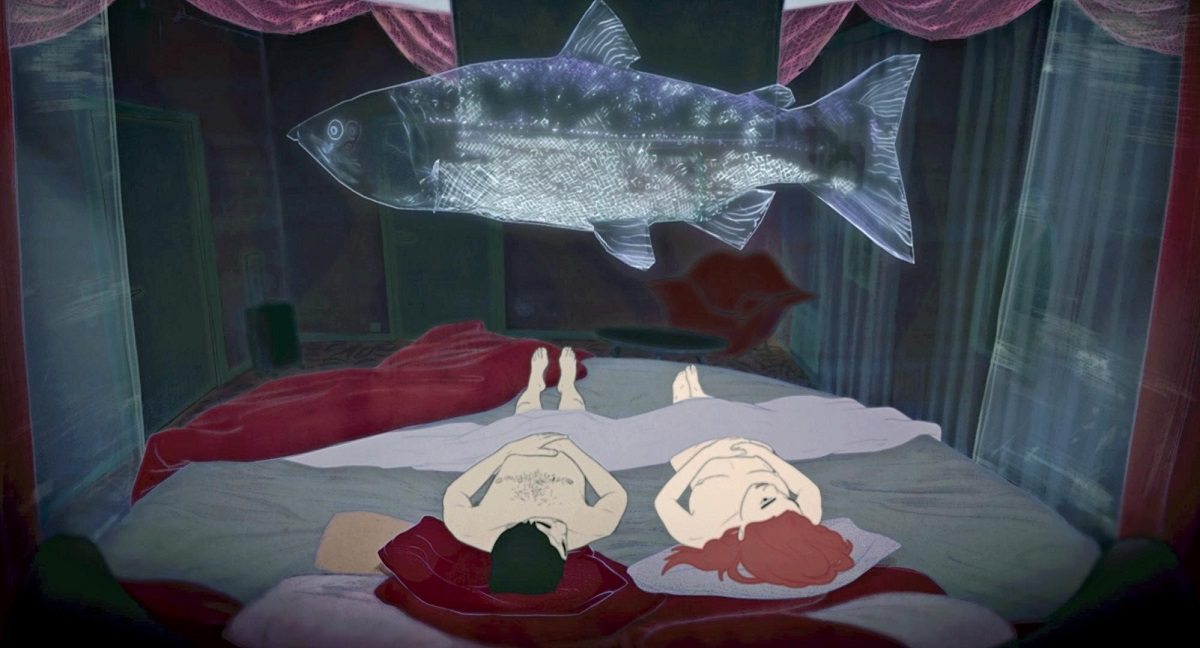
Komura, left, spends time with a woman at a hotel in Hokkaido.
“Then I’m in the labyrinth of Murakami stories,” he said. “I feel attracted to something light, or to something dark, something mysterious, and something magical, and I try to grab them, and try to embrace them and become myself [in] those stories.”
Characters and episodes from different works are organically connected to each other to create a hybrid story.
“You have different plants in the same pot. They’re growing, and then their roots start growing together, and the plants start growing together in my mind. And gradually, I start thinking, ‘Oh, but this character is going into here. Maybe this character could be also that character, et cetera, et cetera.’ And, little by little, before you know it, there’s a story that comes up in your mind, but the story is all made up of Murakami bits,” Foldes said.
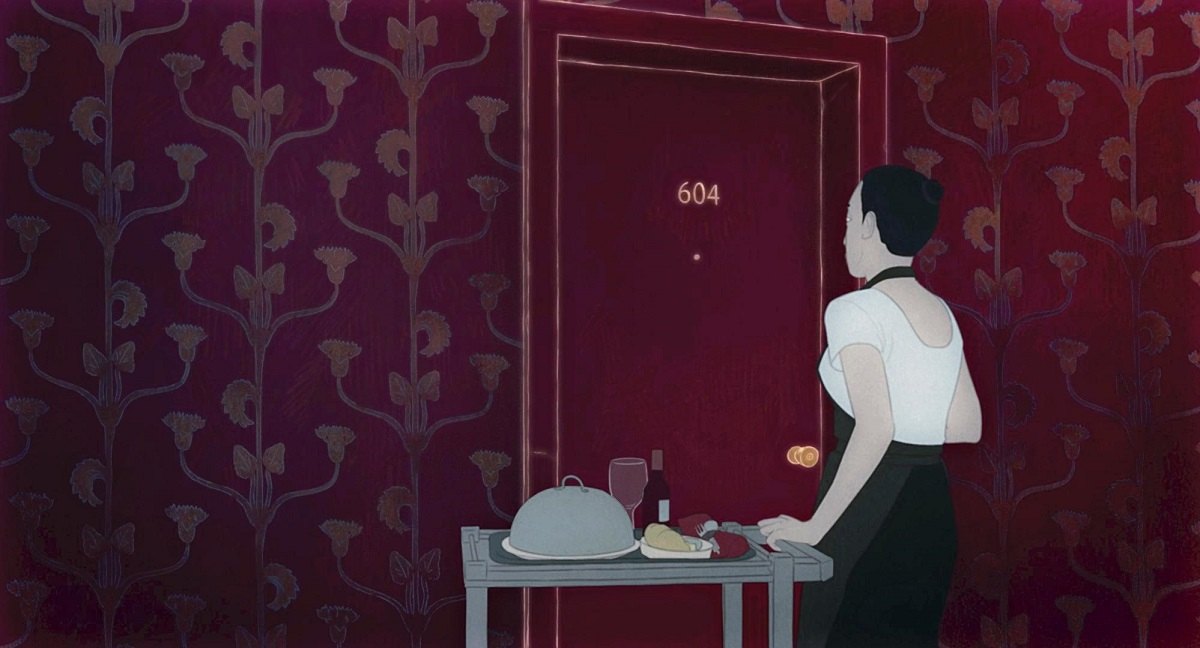
Kyoko has a strange experience on her 20th birthday.
As the original stories were adapted, they were embellished with a new perspective and new appeal.
“I only do things the way I feel like doing them. I only follow my instinct. Maybe people think, ‘Oh, this is a crazy interpretation.’ So be it. I don’t think it’s crazy because it’s totally honest, totally inspired. If you follow your heart, if you follow your inspiration, you can’t be wrong,” Foldes said.
A 4-country film
The animated sequences for the movie were made using a special technique, based on real footage of actors performing. Production was an international operation involving four countries: France, the Netherlands, Canada and Luxembourg. The live-action video was filmed in Canada, and background images were produced in Luxembourg. The collaboration resulted in a distinct feel and freshness, even though the story itself is set in various places in Japan, just like the original short stories.
Foldes revealed that he is planning to make a live-action adaptation of a Japanese manga.
“I would really love to work with Japanese studios,” he said.
A joy to watch
Ahead of the film’s release, a special screening was held in June at Waseda University in Tokyo. Murakami and Foldes took part in a talk session at the event.
“I watched the film twice and enjoyed it both times,” Murakami said. “It was really interesting. I couldn’t even make out whether some of the scenes were unique to the film or written by me.”
The talk session grew animated when they touched on Kaeru-kun, the huge frog from “Super-Frog Saves Tokyo” and the most striking character in the film.
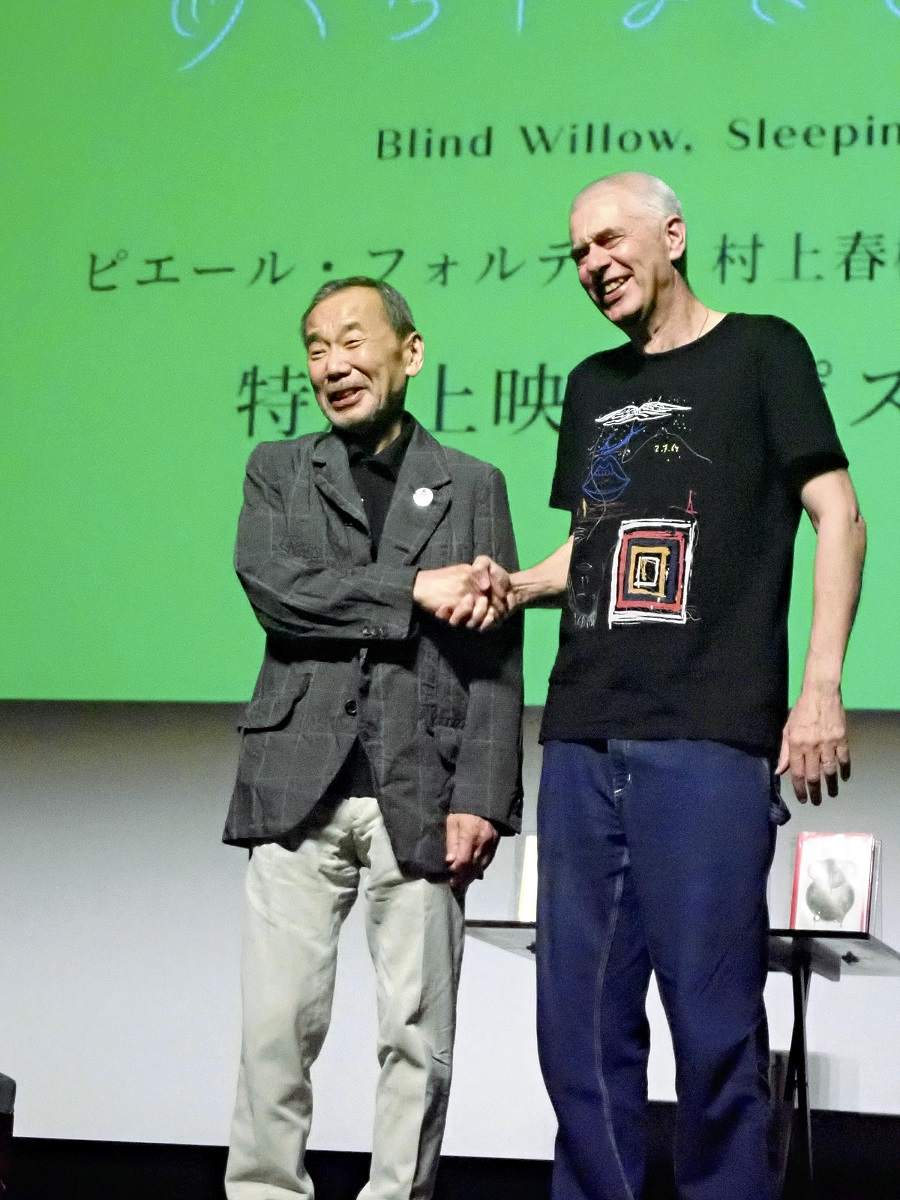
Haruki Murakami, left, and Pierre Foldes shake hands at a special screening of “Blind Willow, Sleeping Woman.”
“I don’t know how Kaeru-kun came to be [in my work], I can’t remember,” Murakami said. “It’s like he intruded from some other world. [‘Super-Frog Saves Tokyo’] has a style far removed from so-called serious literature, so the editor was puzzled, too. But this short story is very beloved around the world. I like it, too.”
Foldes provided Kaeru-kun with his own voice in the English-language version of the film.
Many Murakami works have been adapted into films, including the short stories “Drive My Car” and “Naya o Yaku” (“Barn Burning”).
“With a novel, filmmaking inevitably involves subtracting [elements],” Murakami said. “With a short story, a director must add something of their own to the film, so I have a feeling that adapting short stories makes for a more ambitious film.”
Asked which of his works he would like to see on the big screen, Murakami quickly picked “Underground.” This nonfiction work consists of interviews with 62 people affected by the sarin gas attack on the Tokyo subway in 1995, including victims.
“The book is filled with the voices of many different people. It’d be wonderful if they turned into a film, though it would be very difficult,” said Murakami, sounding hopeful.
"Culture" POPULAR ARTICLE
-
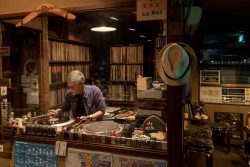
Tokyo’s Jazz Kissa Cafes Documented by Belfast-Born Photographer Philip Arneill
-

Popularity of Piggy Banks Across Time and Place Seen at Bank’s Museum of Money Boxes in Hyogo Pref.
-
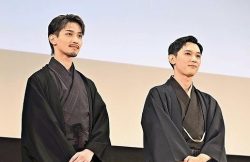
Film ‘Kokuho’ Screened at Tokyo’s Kabukiza Theatre, Historic Hub for Traditional Art Form
-
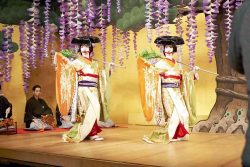
‘Kokuho’ Creates Opening for Japan’s Film Industry with Lavish Depiction of Kabuki
-

Junichi Okada Wears Three Hats in ‘Last Samurai Standing,’ Serving as Star, Producer, Action Choreographer in Thrilling Netflix Period Drama
JN ACCESS RANKING
-

BOJ Gov. Ueda: Highly Likely Mechanism for Rising Wages, Prices Will Be Maintained
-

Japan Govt Adopts Measures to Curb Mega Solar Power Plant Projects Amid Environmental Concerns
-

Core Inflation in Tokyo Slows in December but Stays above BOJ Target
-

Osaka-Kansai Expo’s Economic Impact Estimated at ¥3.6 Trillion, Takes Actual Visitor Numbers into Account
-

Major Japan Firms’ Average Winter Bonus Tops ¥1 Mil.


